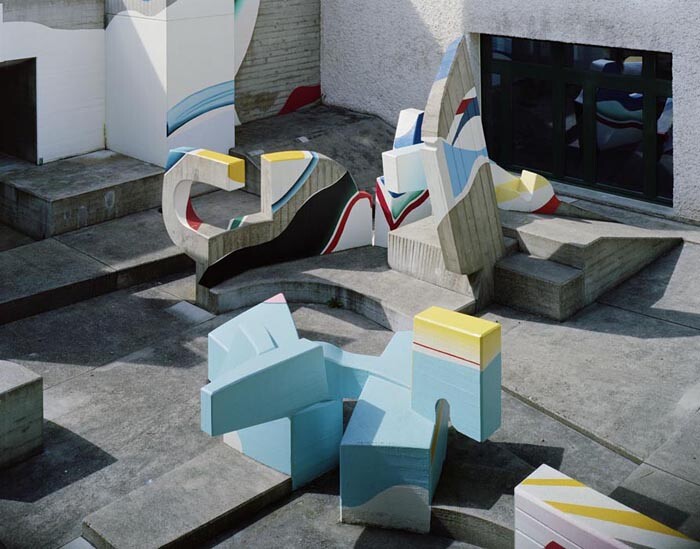Categories
Subjects
Authors
Artists
Venues
Locations
Calendar
Filter
Done
September 8, 2010 – Review
Michael Grossert’s "3 Playgrounds, 1967–1975" at New Jerseyy, Switzerland
Quinn Latimer

It can be difficult in our age of post-everything to comprehend the political import and impact of art and architecture in the 20th century, when stakes—see: two world wars, and the modernist and/or progressive ardor that arose around them—were high. It is far easier in our climate, in which art and politics often feel like estranged commuters, to understand such work as part of a formalist or art-historical continuum. An exception might be the experimental, postwar playgrounds of America and Europe—as designed by artists, pedagogues, and innovators like Isamu Noguchi, Aldo van Eyck, and Carl Theodor Sørensen—which even now retain a tangible weirdness and palpable utopian spirit. That playgrounds are a social project is a given, even when designed by artists with “purely” aesthetic intentions.
If Noguchi’s unrealized “Play Mountain” (1933) united modernist sculptural principles and Japanese design—Noguchi felt it was the “progenitor of playgrounds as sculptural landscapes”—and Aldo Van Eyck employed the formalism of the De Stijl artists in the 700 postwar playgrounds he designed in Amsterdam, the Basel sculptor Michael Grossert’s contribution to the field appears small indeed. It constitutes just three projects—one unrealized—made between 1967 and 1975. Nevertheless, these playgrounds, as seen in video, photographs, models, and prototypes, …